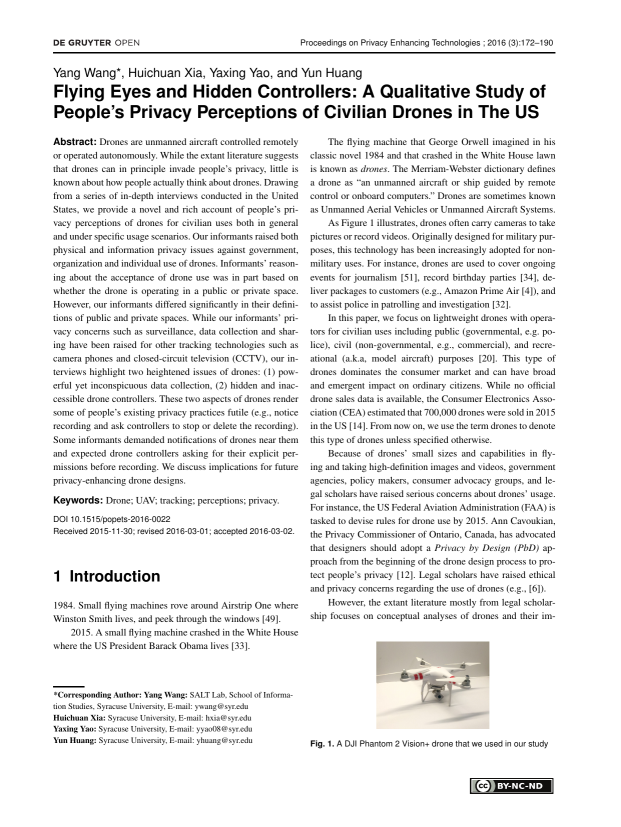Flying Eyes and Hidden Controllers: A Qualitative Study of People’s Privacy Perceptions of Civilian Drones in The US
Authors: Yang Wang (SALT Lab, School of Information Studies, Syracuse University), Huichuan Xia (Syracuse University), Yaxing Yao (Syracuse University), Yun Huang (Syracuse University)
Volume: 2016
Issue: 3
Pages: 172–190
DOI: https://doi.org/10.1515/popets-2016-0022
Abstract: Drones are unmanned aircraft controlled remotely or operated autonomously. While the extant literature suggests that drones can in principle invade people’s privacy, little is known about how people actually think about drones. Drawing from a series of in-depth interviews conducted in the United States, we provide a novel and rich account of people’s privacy perceptions of drones for civilian uses both in general and under specific usage scenarios. Our informants raised both physical and information privacy issues against government, organization and individual use of drones. Informants’ reasoning about the acceptance of drone use was in part based on whether the drone is operating in a public or private space. However, our informants differed significantly in their definitions of public and private spaces. While our informants’ privacy concerns such as surveillance, data collection and sharing have been raised for other tracking technologies such as camera phones and closed-circuit television (CCTV), our interviews highlight two heightened issues of drones: (1) powerful yet inconspicuous data collection, (2) hidden and inaccessible drone controllers. These two aspects of drones render some of people’s existing privacy practices futile (e.g., notice recording and ask controllers to stop or delete the recording). Some informants demanded notifications of drones near them and expected drone controllers asking for their explicit permissions before recording. We discuss implications for future privacy-enhancing drone designs.
Keywords: Drone; UAV; tracking; perceptions; privacy.
Copyright in PoPETs articles are held by their authors. This article is published under a Creative Commons Attribution-NonCommercial-NoDerivs 3.0 license.

